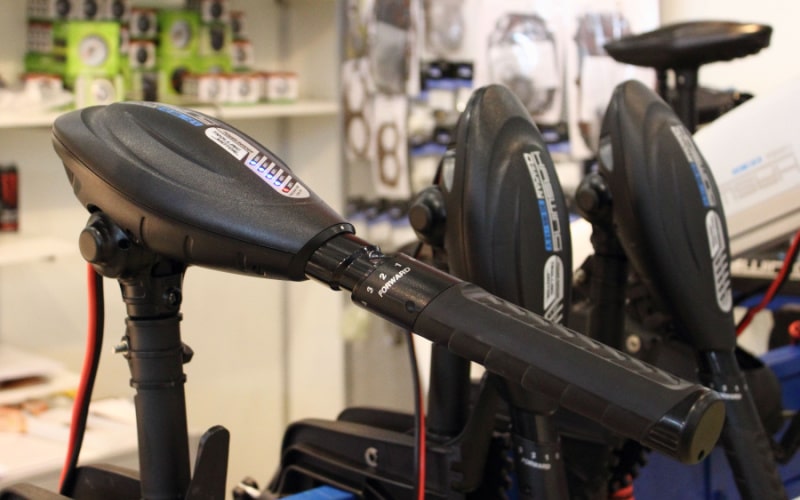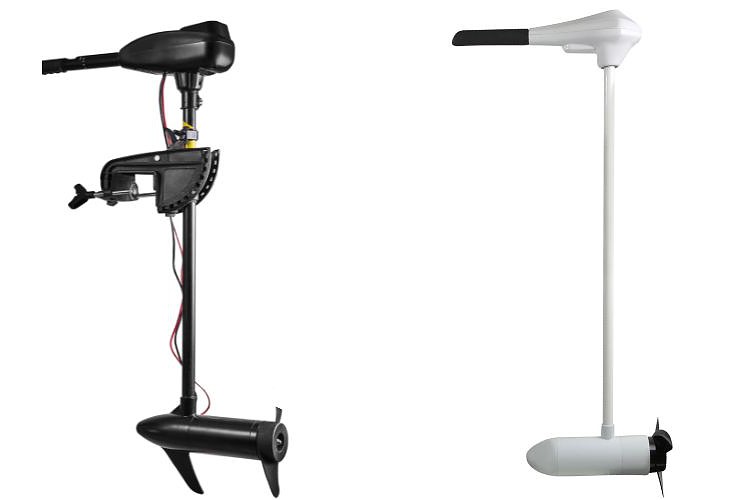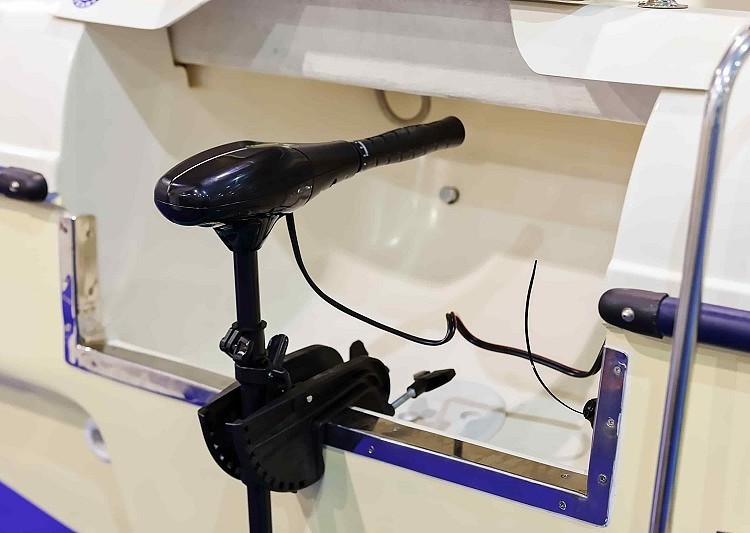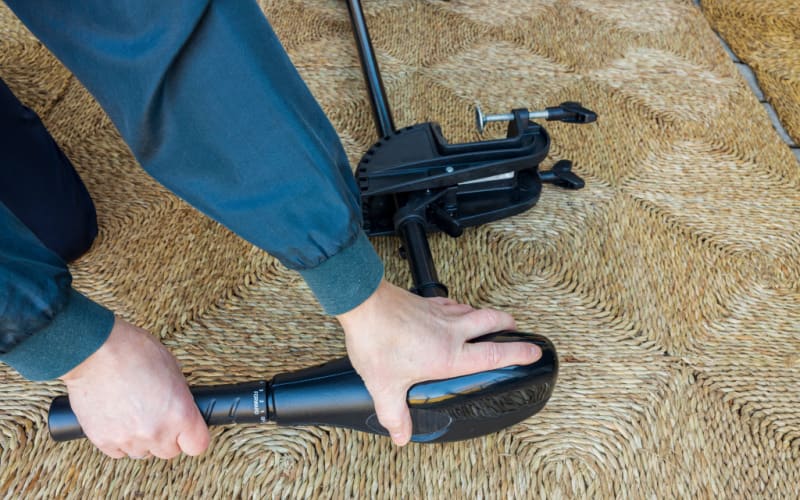If you’re an angler or avid boat enthusiast, the most important tool you’re using is arguably the trolling motor. Unfortunately, it takes the most abuse.
That’s because it gets abused by the weather, used for hours on end, and gets bumped against rocks, stumps, and docks.
Even if you have a premium trolling motor, you’ll still need to ensure that you are cleaning your trolling motor often and performing periodic maintenance on it.
Cleaning your motor can keep it running for many years to come.
In this article, we’ll cover how to clean your trolling motor the right way and other maintenance tips to prevent potential problems that could ruin the performance of the motor.
Let’s begin!
Table of Contents
How do you clean a trolling motor properly?

You may be wondering, “How often should I clean my trolling motor?”
The answer depends on the type of trolling motor you’re using.
Freshwater trolling motors can be cleaned once every few uses, while saltwater trolling motors need to be cleaned after every use.
Before you begin cleaning, you’ll want to ensure that your trolling motor is on a stable surface to prevent the unit from toppling over.
Rinse the motor thoroughly with tap water, but don’t get it on the control head. Make sure you dislodge all of the debris and dirt on the motor. Then let it dry completely.
Cleaning the trolling motor prop
Your prop takes a beating after every fishing trip, especially if you run it through shallow waters.
Dirt shallow bays, stump fields, and areas with thick vegetation can leave a lot of gunk in your prop.
As a result, it can snag or break the blades. It’s important you start by removing any weeds or fishing lines that you’ve picked up on your trip.
If left untreated, it can allow water to enter into the lower unit of the motor and damage the seals.
When doing this, make sure to remove the prop completely off the motor to perform a deep inspection of any weeds or fishing lines that may have crept behind the motor.
This can be a tedious process, and you’ll need to untangle the weeds carefully. You may have to cut them away using a sharp hand-held tool.
Then proceed to check if the prop drive pin is bent or has any wear and tear on it. If it’s damaged, you’ll need to replace it.
Lastly, clean each part thoroughly, and re-assemble the prop back together.
How do you clean a trolling motor after saltwater?
Your trolling motor provides immense power to your boat when out fishing. It helps to keep your vessel afloat and move smoothly even in rough waters.
Unfortunately, saltwater can cause some parts of the trolling motor to corrode.
That’s why it’s imperative that you clean your trolling motor after every saltwater use.
Examine your trolling motor for signs of deterioration or excess residue
Before you start cleaning the trolling motors, you’ll want to check for any signs of damages after your trip.
There may be obstacles such as rocks or weeds that can cause kinks, splits, scratches, or cracks.
Check each part thoroughly and clean the rough patches using sandpaper to remove the scratches.
Look out for corrosion
Next, you’ll want to check for possible corrosion on the anode or inside the propeller nut. If the nut is loose, make sure to tighten it again to keep it in place.
If there is any corrosion damage, you may want to consider adding lubricants for protection or replacing that part altogether. Corrosion on the anode will impact how the propeller performs.
Steps to Cleaning the Electrical Units of the Motor
1/ Thoroughly rinse and wash the motor with cold water
First, you’ll want to thoroughly rinse down your motor with fresh water after every trip in the saltwater.
However, while rinsing the motor, make sure to keep the water from entering the control head. Since the control head isn’t waterproof, you don’t want to spray onto this area directly. Water that gets inside the head can travel down the shaft and damage components inside of the motor compartment, and short circuit the speed control.
To clean the head of the motor, simply wipe it clean using a cloth to get rid of the saltwater.
After rinsing, leave the unit out to dry completely. Check to see that all of the saltwater is rinsed away.
2/ Get rid of any crawling sea critters
Since saltwater has sea creatures, you may find some hanging onto the propeller.
These species tend to transfer between waters to your boat and spread to your other gear. It’s best to thoroughly wash down your prop and motor and disinfect the area to prevent the creatures from spreading.
3/ Scrape off the gunk
Keep the power cord and associated connections clean by looking for any corrosion.
You can use a toothbrush to scrape off any residue.
If there is any severe rusting, use a wire brush or metal file to dislodge the tough deposits. Then use a cloth to wipe the area clean.
Protect your trolling motor from corrosion

If you’re using a freshwater trolling motor in saltwater, the metal components are at risk of corrosion.
We advise applying a thin coat of grease or oil to these exposed metal parts. Many manufacturers won’t cover damage from saltwater use in their warranties.
A can of 12-ounce grease can easily protect your boat for many trips. Ideally, you’ll want to grease the metal fasteners, shaft, prop nut and pin, mounting brackets, transom lockdown bolts, and electrical connections.
Applying corrosion resistance products can go a long way in protecting your motor against the ravages of saltwater.
How do you remove corrosion from trolling motor plugs?

If your motor isn’t working or suffers from power loss, it may be caused by corrosion in the trolling motor plugs.
First, check that the plug is connected properly and whether it’s loose. If either is the cause, you’ll want to make sure you connect it properly or tighten the loose connection.
Luckily, there are products that can be used to remove and prevent corrosion. If corrosion has already infiltrated your motor, you can get rid of it.
For removing internal corrosion, you can use Salt Away . This is a non-toxic and non-hazardous concentrate liquid that removes salt from any surface.
It works by mixing in with water to eliminate the salt that is retained in the motor.
For external corrosion, you’ll want to get rid of the damage caused by corrosion.
We recommend Lime Away since it helps to erase the rust and water stains while bringing back the shiny look of any metal.
Once the corrosion is removed, you can apply coats of etch primer paint and gloss to make the trolling motor look as good as new.
To prevent corrosion, you’ll need to coat all terminal connections using dielectric grease .
Moving forward, you’ll want to check that all connections are tight to prevent damage to the plugs.
However, we recommend replacing your plug with a reliable corrosion-resistant connection such as the Minn Kota Plug and Receptacle.
It has a sealed waterproof design along with a secure threaded electrical connection to prevent corrosion damage to the plug.
How do you lubricate/maintain a trolling motor?
Once the motor is cleaned off, you’ll want to lubricate the motor, so the parts can move and function smoothly.
Lubricating the motor
Although trolling motors are mostly sealed, you’ll still need to lubricate the pivot and rub joints after washing your motor. Lubricating the unit well keeps it running smoothly and prevents corrosion.
To lubricate your motor, we recommend a non-solvent, non-aerosol, and silica-based lubricant . When choosing a lubricant for your trolling motor, make sure that it has water-resistant properties, minimizes friction, and prevents rust.
Next, apply the lubricant to all pivot points, clamp screws, and latch pins. Move the parts gently to work the lubricate solution into the joint. When lubricating the propeller nut, the prop should operate quietly and eliminate any squealing sounds.
In addition, you’ll want to lubricate the composite shaft using a coating from an aqueous-based silicone spray .
This ensures that the motor will smoothly deploy and retract as you lift the motor in and out of the water. You can lightly coat any other exposed metal parts using the same spray.
Tips to Maintain Your Trolling Motor
1/ Check to ensure all screws and bolts are secure
When traveling through waters for long periods, the vibration can cause mounting bolts to loosen.
When the stabilizer bar or mounting bolts don’t hold tightly to the deck of the boats, your motor can take a lot of physical abuse, especially when moving through weeds or heavy waves.
Simply check all mounting points and tighten the bolts as needed.
2/ Wipe down and recharge the motor battery
Inspecting the battery can help to preserve the battery life. Since batteries are the lifeblood of your motor, they are a critical component to the motor’s performance.
First, wear goggles and safety gloves to protect your eyes and hands.
Brush down your motor battery to wipe off the dirt or rust using sandpaper, which helps to eliminate any hard deposits.
Clear away harmful objects and check the battery terminals for any damage. Make sure to disconnect the wiring before you charge the battery again.
For maximum battery life, you’ll want to recharge the motor’s battery after each use.
3/ Disconnect power and put the motor away properly after each use
Storing the unit properly helps to keep it away from hazards or things that can damage it. Start by disconnecting the power supply, which saves energy.
Store the motor in an upright position. This helps to protect the shaft from potential damage and saves space.

You’ll also want to store the cables properly to prevent them from being pinched or cut. Some trolling motors may have built-in transducer cables, so you’ll want to lay the cables flat and keep them routed the same way.
Use PET expandable braided sleeving or zip ties to manage the cable to avoid tangling easily.
Conclusion
Your trolling motor is a power source for your boat, which is why it’s imperative that you keep it clean and damage-free before your next fishing trip.
Luckily, cleaning your motor isn’t too difficult.
With the right tools, you can easily clean and maintain your motor. Proper care and maintenance can keep your trolling motor working for over a decade.
Make sure to follow your trolling motor’s manual for additional maintenance tips as well.
We’ve hoped you found this article helpful!

I created this site to help people – to help you – with your boat problems. Instead of helping one person at a time, I want this website to be the “one-stop-shop” for everyone’s boating concerns. Read more.



